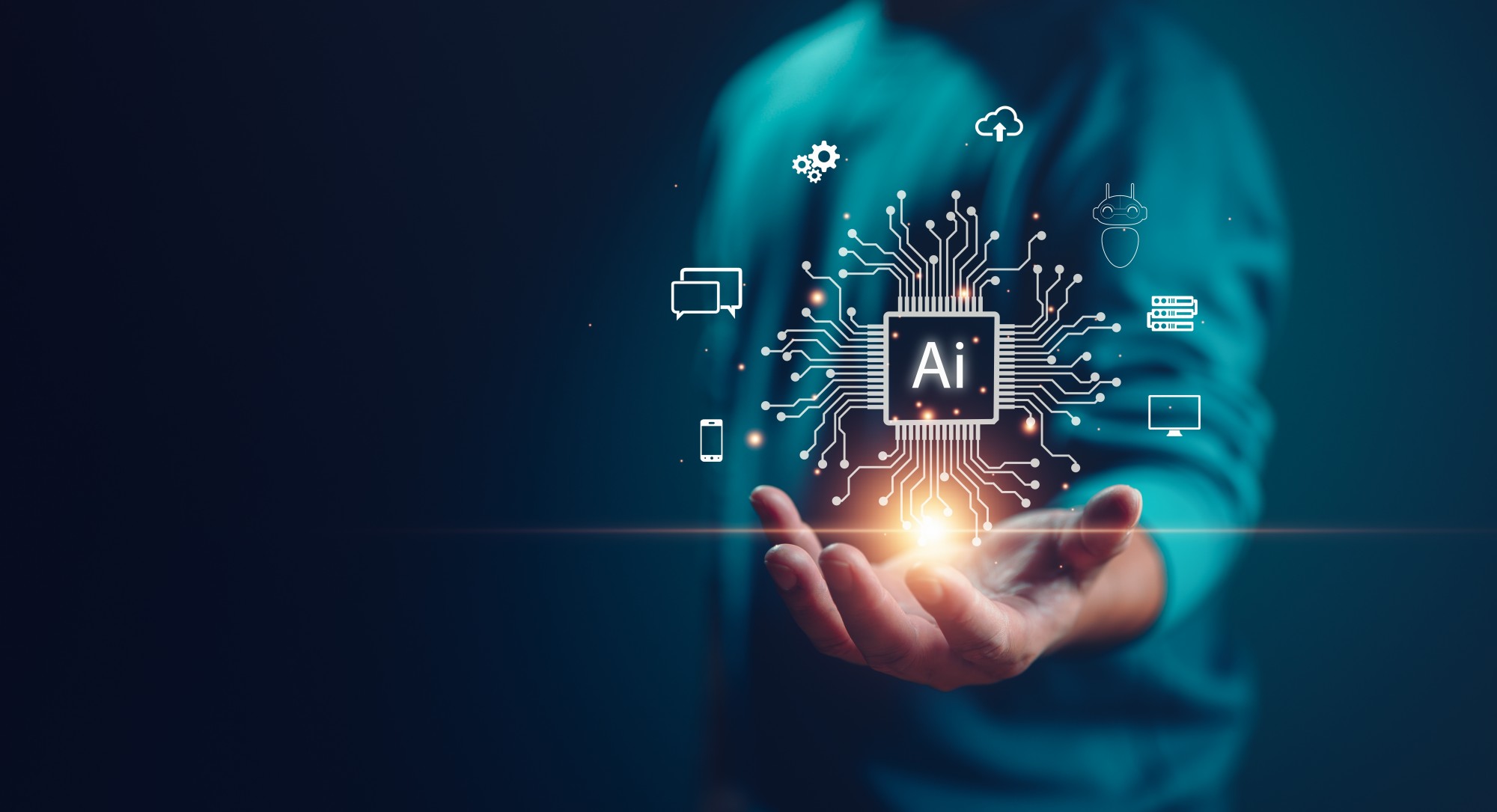April 8, 2024 - By Melanie Nakagawa, Microsoft
Sustainable by Design: Advancing the Sustainability of AI
During the past year, the pace of AI adoption has accelerated significantly, ushering in groundbreaking advances, discoveries and solutions with the potential to help address humanity’s biggest problems. We see this as a massive platform shift, akin to the printing press, which was not just an invention, but a technology that shaped a new economy. Alongside the incredible promise and benefits of AI, we recognize the resource intensity of these applications and the need to address the environmental impact from every angle.
In line with our commitment to responsible AI and our ambitious sustainability commitments, we’re determined to tackle this challenge so the world can harness the full benefits of AI. There are three areas where we’re deeply invested and increasing our focus. The first is optimizing data center energy and water efficiency. The second is advancing low-carbon materials, creating global markets to help advance sustainability across industries. And the third is improving the energy efficiency of AI and cloud services, empowering our customers and partners with tools for collective progress.
- Optimizing data center energy and water efficiency
Over the past decade, our quest to innovate across every part of our cloud infrastructure to deliver more sustainable cloud services has led to many changes across how we design, build and operate our data centers. As we continue this work, two of the biggest challenges we’re addressing are energy management and water intensity.
Energy management
The energy intensity of advanced cloud and AI services has driven us to accelerate our efforts to drive efficiencies and energy reductions. In addition, we have expanded our support to grow the availability of renewable energy, both for our own operations and for the communities in which we operate.
To continue driving improvements in data center energy management, we work to reduce peak power, safely harvest unused power, increase server density in existing data centers through intelligent utilization and power-aware virtual machine allocation, and drive efficiency all the way to our chips and code.
With recognition of the need to continue bringing more renewable energy online, we currently have more than 135 renewables projects in our power purchase agreement (PPA) portfolio globally, a powerful mechanism to support the global energy transition. In the way we design, build and operate our data centers, we’re focused on the path to 100% zero-carbon electricity 100% of the time.
We’re also working on solutions that enable data centers to provide energy back to the grid to contribute to local energy supply during times of high demand. For example, in Ireland we built batteries into wind turbines for a wind energy project to capture energy when the turbines over-perform and deliver that energy to the local grid. In Denmark, excess heat created in a Microsoft data center will provide heat to the local community, producing enough heat to warm around 6,000 local homes. Both are examples of our work to use our data centers as a source of electricity to relieve pressure on local electric grids.
Water intensity
Currently, many data centers rely on water for two reasons: directly for cooling, and indirectly for electricity generation. Although at a global scale total water consumption by data centers is relatively small, weighing in about 0.1% of national water use in the U.S.1 we recognize the impact of data center operations on water-stressed areas, and are working to reduce this impact and design solutions that advance our progress on the road to water positive.
We take a holistic approach to water reduction across our business, from design to efficiency, looking for immediate opportunities through operational usage and, in the longer term, through design innovation to reduce, recycle and repurpose water. We’ve found success in using direct air instead of water to cool data centers, harvesting rainwater, and procuring reclaimed water from utilities to reduce our dependence on fresh water. For example, in our Sweden datacenters, we will use a process called free cooling, a simple, cost-effective method that results in a 30% reduction in energy costs and 90% less water usage than standard systems.
- Advancing low-carbon materials
For our future data centers and to help drive progress industry-wide, another way we can advance progress is by helping to accelerate markets for low-carbon building materials. As a sector, building materials such as steel and cement are currently some of the highest contributors to the carbon cost of new construction, together producing an estimated 13.5% of global carbon emissions.2
Innovations in green steel3 and lower-carbon cement are rapidly emerging, however, these markets are still nascent and need significant investment to scale up and bring supply online.
With our $1 billion Climate Innovation Fund, we’re investing to hasten the development and deployment of new climate innovations, especially for underfunded sectors and supply-constrained markets like lower-carbon building materials. For example, we are investing in solutions such as H2 Green Steel to expand market supply of near-zero carbon steel4 which can deliver up to 95% lower CO2 emissions than conventional steel. We are also evaluating use of near-zero carbon steel in our own building materials and equipment supply chains.
Similarly, we’re working to broaden availability of low-carbon concrete and other construction materials through commercial projects and collaboration with the largest data center companies in the world. In Washington state, our pilot program utilizes concrete alternatives like biogenic limestone and fly ash and slag with the goal of lowering the embodied carbon in concrete by more than 50% compared to traditional concrete mixes. With these investments, we aim to facilitate the commercialization of materials that can make an outsized impact on carbon reduction, for our own construction and the broader industry.
- Improving energy efficiency of AI and cloud services
Reducing the energy needed to power AI and cloud services up front is another critical component of the solution. We’re working to support developers and IT professionals with tools to optimize models and code, exploring ways to reduce the energy requirements of AI, and harnessing the power of these advanced technologies to drive energy breakthroughs.
As a founding member of the Green Software Foundation, we collaborate with other industry-leading organization to help grow the field of green software engineering, contribute to standards for the industry and work together to reduce the carbon emissions of software. Across our cloud services, we’re working to ensure IT professionals have the information they need to better understand and reduce the carbon emissions associated with their cloud usage.
As AI scenarios increase in complexity, we’re empowering developers to build and optimize AI models that can achieve similar outcomes while requiring fewer resources. Over the past few months, we’ve released a suite of small language models (SLMs) called “Phi” that achieve remarkable performance on a variety of benchmarks, matching or outperforming models up to 25x larger. Now available in the Azure AI Studio model catalog, Phi-2 offers a compact model for research and development or fine-tuning experimentation on a variety of tasks.
We’ve learned that the complex sustainability challenges we face today are best addressed through multidisciplinary, multi-sector collaboration, and energy breakthroughs are no exception. We recently collaborated with the Department of Energy’s Pacific Northwest National Laboratory (PNNL) using advanced AI models to find new materials that can reduce reliance on traditional battery materials such as lithium. The team screened over 32 million materials, discovered 500,00 stable candidates, and synthesized one promising candidate to a working prototype, shortening a process that can take years to a matter of days.
These highlights provide a glimpse into our work to build and operate cloud services more sustainably, advancing solutions that can reduce the future impact of AI. Our ambitious 2030 targets to become carbon negative, water positive, zero waste and to protect biodiversity require continued innovation across every aspect of our operations, and we’re committed to sharing what we learn along the way. Stay tuned for more on this topic in the months ahead.
This content originally appeared on the Microsoft website.
 Melanie Nakagawa is Microsoft's Chief Sustainability Officer. Melanie brings to Microsoft almost two decades of environmental sustainability experience at the nexus of policy, business and technology. She previously served as Special Assistant to the President and Senior Director for Climate and Energy on the National Security Council at the White House, one of several roles she has held in the U.S. government. At the White House, Melanie played a leadership role on international and domestic climate initiatives, as well as energy issues that included the international energy response to the war in Ukraine.
Melanie Nakagawa is Microsoft's Chief Sustainability Officer. Melanie brings to Microsoft almost two decades of environmental sustainability experience at the nexus of policy, business and technology. She previously served as Special Assistant to the President and Senior Director for Climate and Energy on the National Security Council at the White House, one of several roles she has held in the U.S. government. At the White House, Melanie played a leadership role on international and domestic climate initiatives, as well as energy issues that included the international energy response to the war in Ukraine.
To learn more, visit the Microsoft Sustainability website and read the whitepaper Accelerating Sustainability with AI.
Share this valuable information with your colleagues using the buttons below:
« Back to ColumnsStay Up-To-Date












